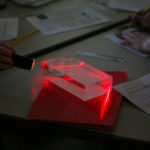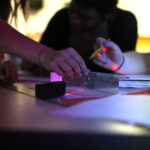Physics of Color
In the Spring 2017 I taught a course titled "Physics of Color in the Context of the Visual Arts" at Hampshire College, which I designed as a hands-on, interactive course aimed at art students interested in physics and physics students interested in art. In an effort to keep a record of what we did and share the pedagogy with other interested educators, I posted our daily activities, along with the pictures, and links to resources. The copyright to students' work belongs to the students.
-
Color Physics @Hampshire, Days 22-23
On Days 22-23, students worked on their individual projects and final portfolios.

-
Color Physics @Hampshire, Day 21
On Day 21, we first reviewed the interaction of light and matter. Students then used hand-held spectrometers to observe and record the spectrum of hydrogen and identified the mystery gas in one of the tubes.
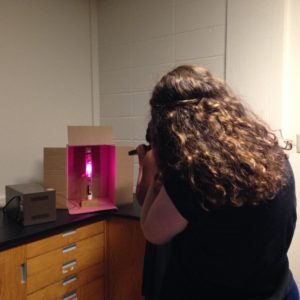
Students used hand-held spectrometers to observe and record spectra of two gases. -
Color Physics @Hampshire, Day 20
On Day 20, we covered two different topics.
We first discussed how reflection and refraction affect the saturation of pigments.

Reflection and Refraction in pigments from Seeing the Light: Optics in Nature, Photography, Color, Vision, and Holography by David R. Falk, Dieter R. Brill , David G. Stork. Wiley, 1986.
We then moved on to some basic quantum mechanics in order to explain why various pigments absorb and reflect different wavelengths. We used a simple model of atom energy levels of sodium. New concepts introduced included
- Photons and their energy E=hc/λ
- Quantized atomic energy levels
- Energy levels of sodium
- Emission and absorption spectra of gases
Sources: Nassau, Kurt “The Causes of Color,” Scientific American, October 1980, pages 124-154.
-
Color Physics @Hampshire, Day 19
On Day 19 we studied reflection and refraction. Students used light sticks, mirrors, and acrylic blocks to investigate, both qualitatively and quantitatively, the optical behavior of light at the interface of material with different indices of refraction. Their investigations led us to the law of reflection and Snell’s law.*
We introduced a number of new concepts:
- index of refraction
- normal to the surface
- angle of incidence
- angle of reflection
- angle of refraction/transmitted angle
Students sent red LED light through acrylic blocks and investigated its reflection and refraction angles. Students sent red LED light through acrylic blocks and investigated its reflection and refraction angles. *The photgraphs taken by and used with the permission of Andrew Hart of Hampshire College.
-
Color Physics @Hampshire, Day 18
On Day 18 we
- Discussed the pieces students drew/painted over the course of the last three days
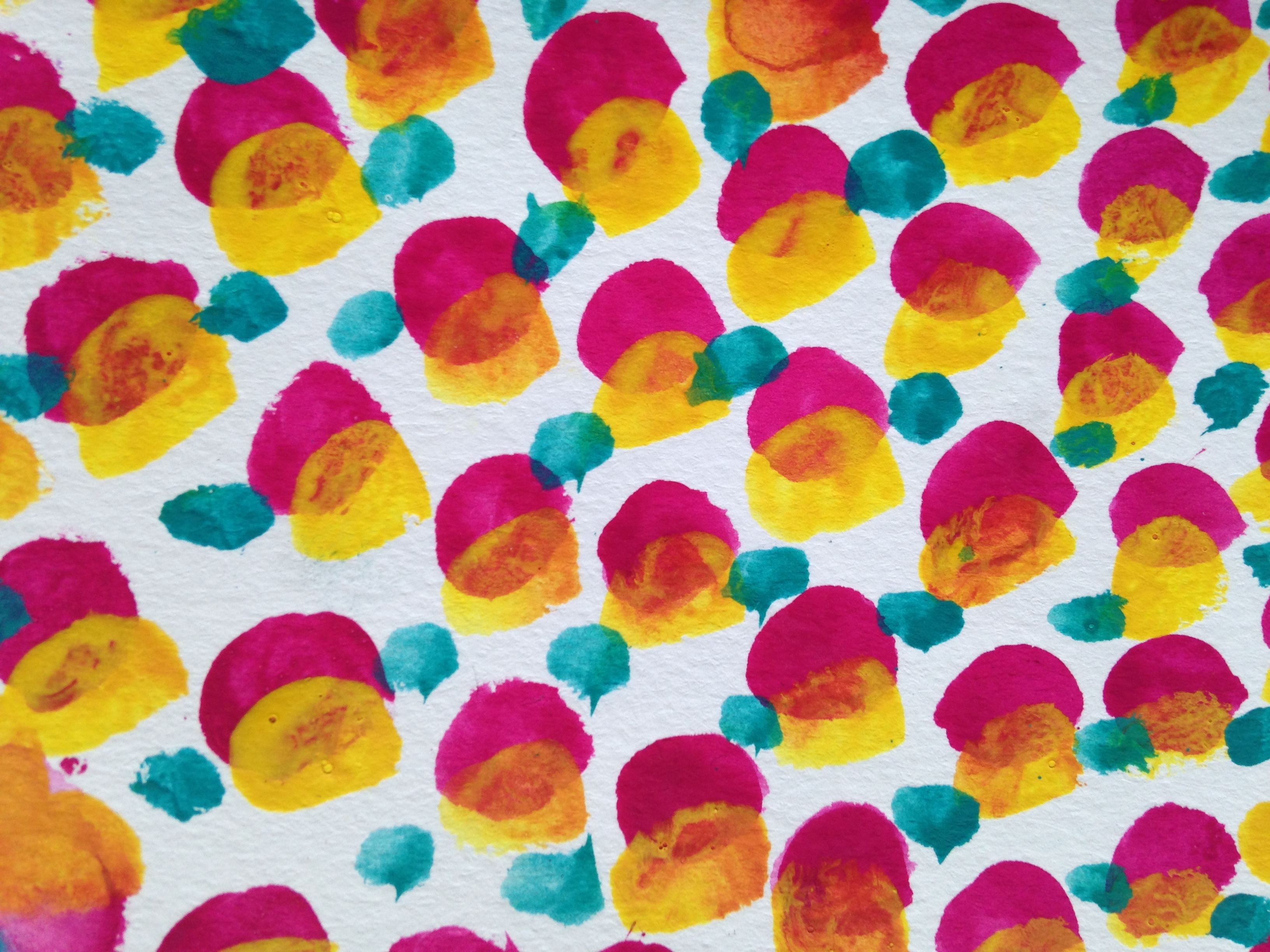 A halftone exercise with watercolors by Madeleine Perreault.
A halftone exercise with watercolors by Madeleine Perreault.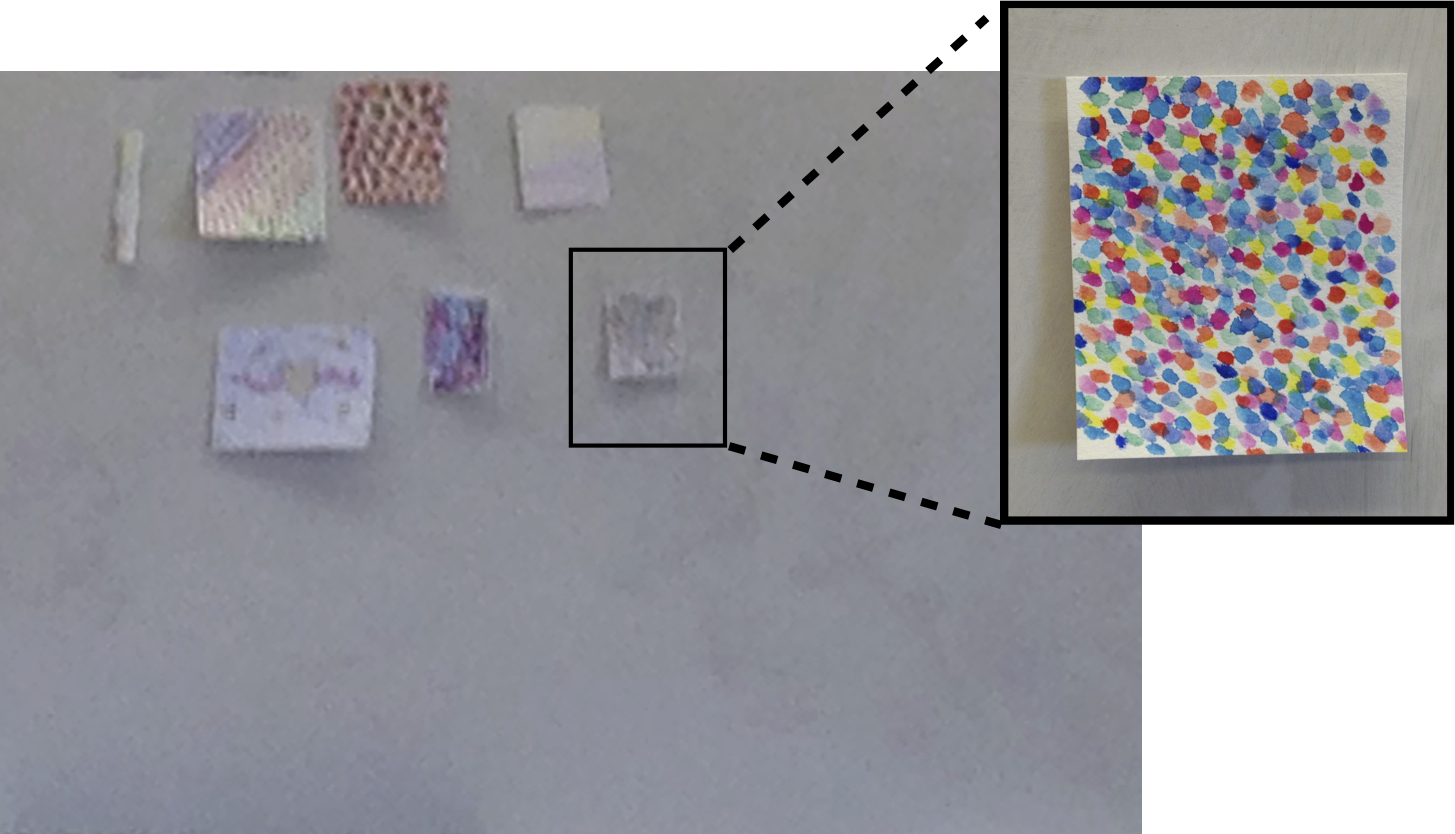
The effects of additive mixing. Piece by Sara Young, looks grey from far away, but up close it is a colorful mixture. - Practiced how to determine the spectral composition of reflected light from the spectral composition of incident light and the reflectance curves of the surfaces.
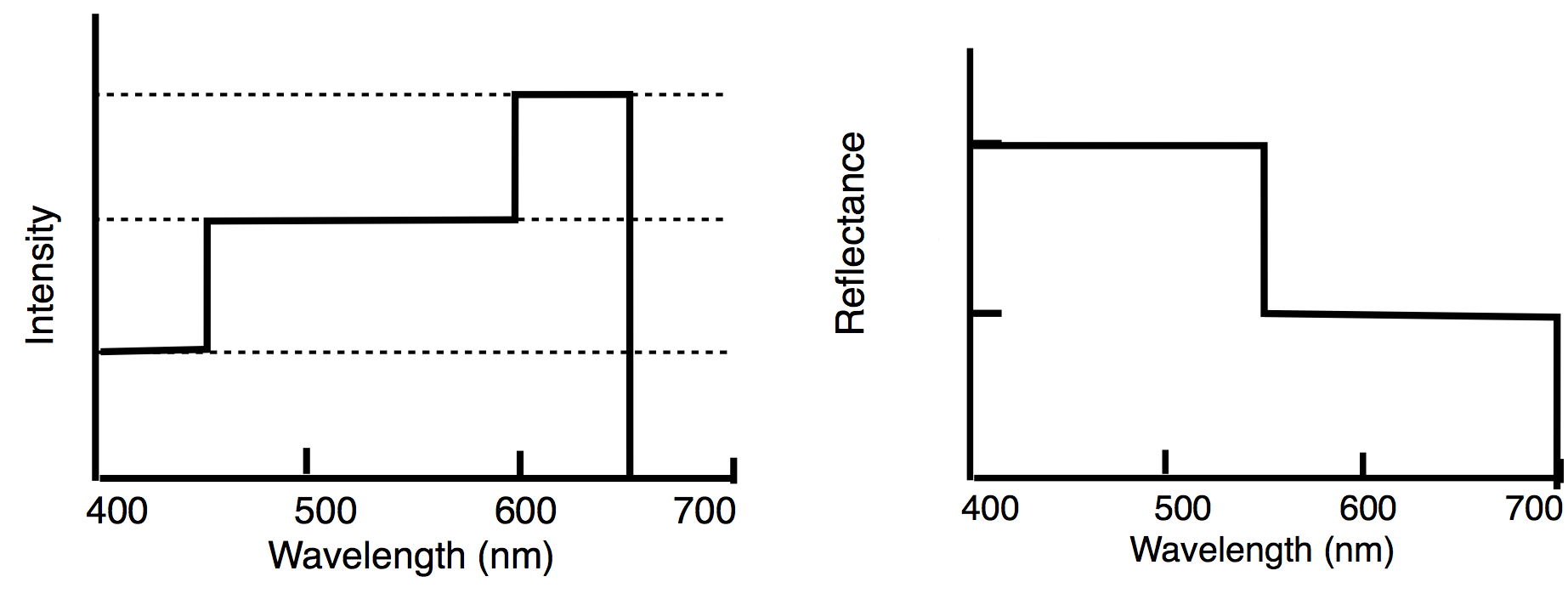
Given date for a sample problem for which students used the incident intensity distribution and the reflectance curve to find the intensity distribution of the reflected light. -
Color Physics @Hampshire, Days 15-17
Days 15, 16, and 17 were spent on hands-on activities in which students investigated subtractive mixing by reflection, and explored the use of additive and subtractive mixing in print and painting. The activities included:
- Creating partitive mixtures in the pointillist style
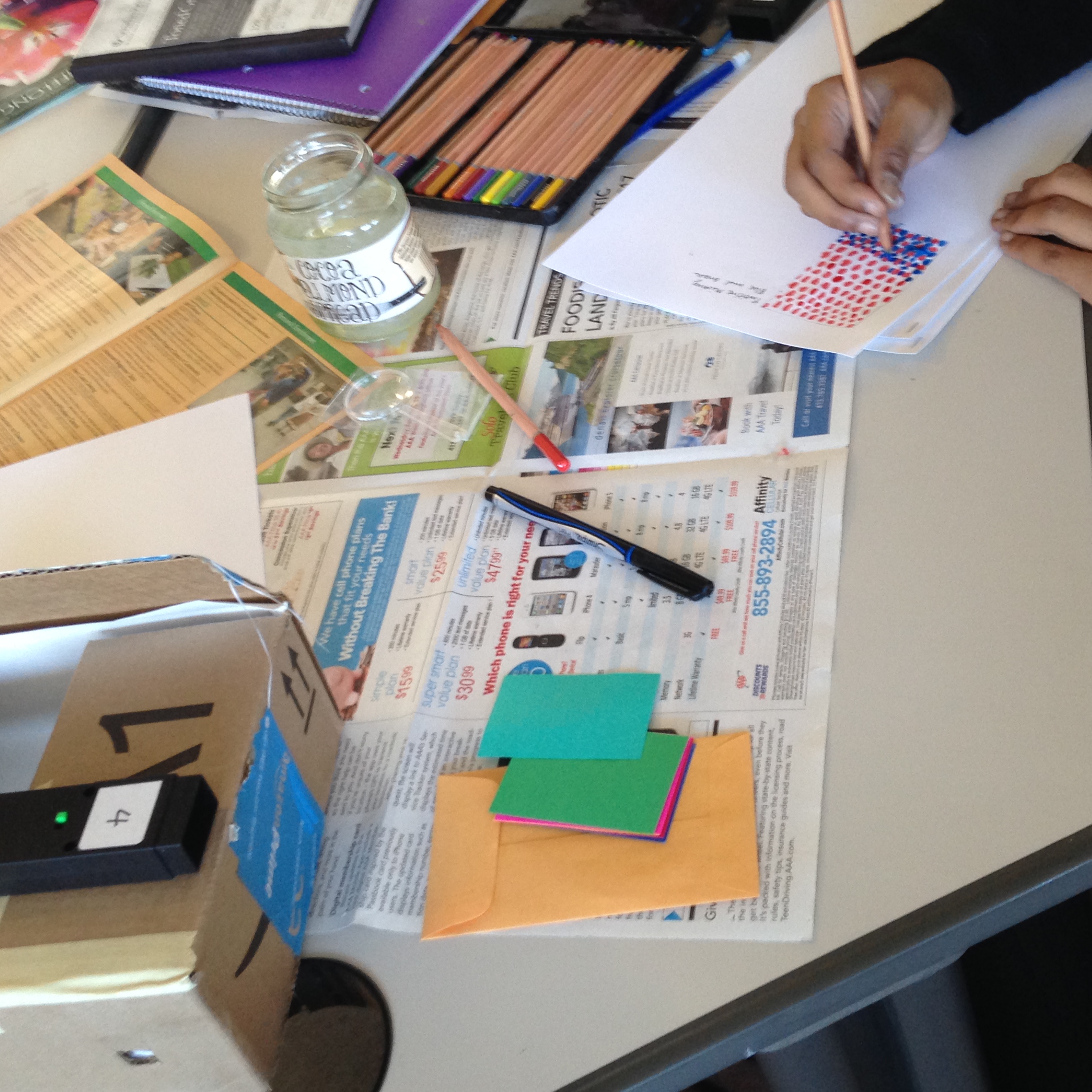
- Investigating and replicating the use of halftone in print
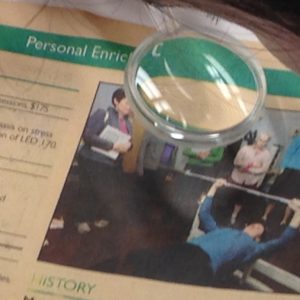
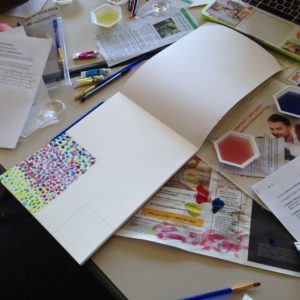
Students used magnifying glasses to look at newsprint and determined how the CMYK system is used for printing. Then the made their own halftone designs.
- Investigating subtractive mixing by reflection.
 This portion involved three different activities:
This portion involved three different activities:
- In the first, students placed pieces of paper of various colors in a light-tight box, illuminated them by one of the lights we have (red, green, or blue), and recorded their observations. The papers we used were to an OK approximation, red, blue, green, cyan, magenta, and yellow.
- In the second activity, students used their observations from the first to predict what colors the same pieces of paper would appear to have when illuminated by white light, but viewed through filters of different colors. They then tested their predictions and commented on any discrepancies.
- Finally, using what they learned from the first two activities, students devised a method by which they can determine how “pure” the cyan, magenta, and yellow pigments in their watercolor sets were.
- Holography. Thanks to Prof. Wirth, each student got to make a hologram using reflection holography.
made holograms today in my physics of color class ? @physartphil pic.twitter.com/9Hu4I7clzY
— sara (@saraannyong) April 6, 2017

A student-made hologram of a thread spool
- Creating partitive mixtures in the pointillist style
-
Color Physics @Hampshire, Day 14
On day 14, in preparation for an activity of making holograms, Prof. Wirth gave a mini lecture on interference of light, its use in early color photography, and its application to holography.
After that, we continued our exploration of subtractive mixing with filters. Students worked through a worksheet in which they had to answer quantitative and qualitative questions. Among other things, students
- Made predictions about the intensity distribution of transmitted light given a wide-spectrum white light incident on ideal filters with a variety of transmittance curves, and compared them with observations.
- Made predictions about the intensity distribution of transmitted light when colored light is incident on ideal filters with a variety of transmittance curves, and compared them with observations.
- Sketched the transmittance curves for a combination filters.
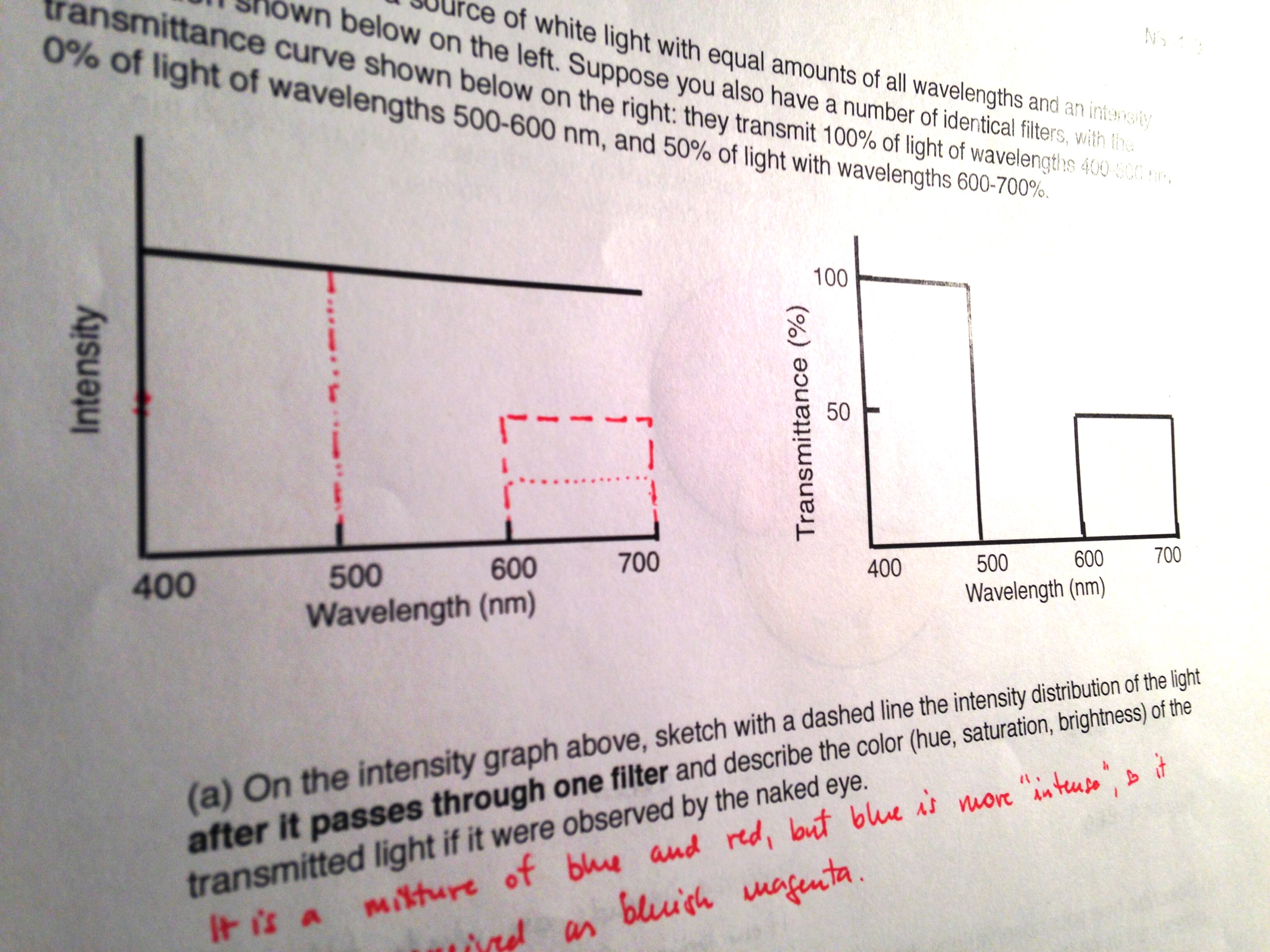
We worked on transmittance curves for multiple filters. - Looked at the real transmittance curves of our filters to understand why not all of the light is blocked by overlapping cyan, magenta, and yellow filters.
At the end, we went over all of the answers as a class.
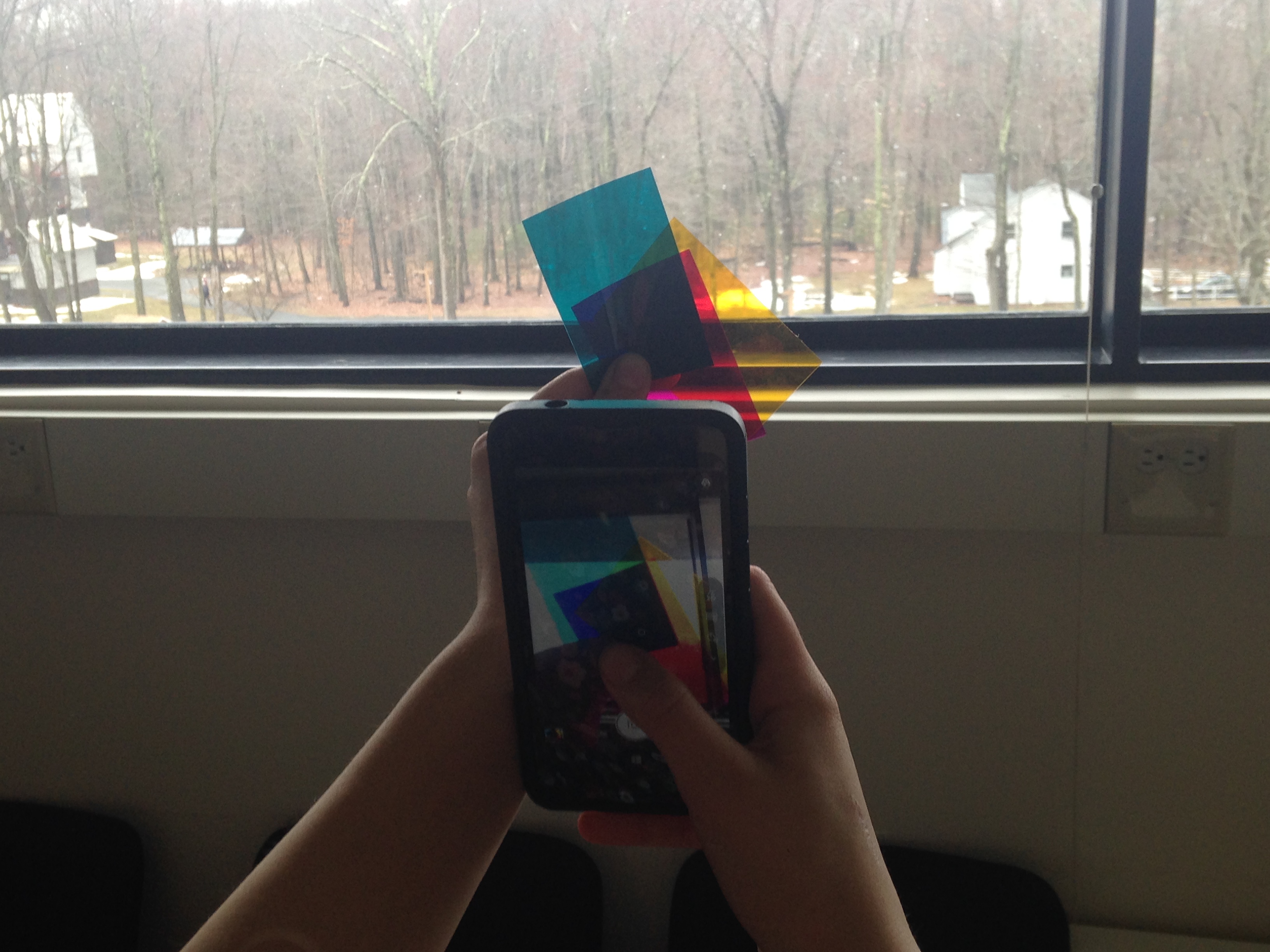
Subtractive mixing with filters. Materials:
-
Color Physics @Hampshire, Day 13
On day 13, a guest speaker, Prof. John Castorino gave a lecture on the biology of color vision. His presentation included an introduction to the anatomy of the eye, the placement of rods and cones, their response to the sensory input, the mechanism behind trichromacy of color vision, the biological basis for color blindness, and many more (I am certainly missing a number of topics). It was great for students to be able to ask biology-related questions and get a straight answer.
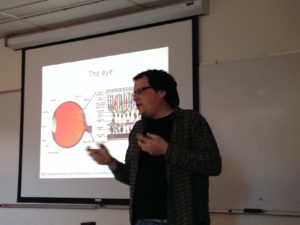
-
Color Physics @Hampshire, Day 12
On day 12 we continued to talk about subtractive mixing with filters. We covered the following topics
- Subtractive mixing with filters
- Transmittance curves
- Ideal vs real fiters
- Cyan, Magenta, and Yellow (CMY) color system
- We also touched on color photography (and in particular the work of the physicist J. C. Maxwell) the early color films, including the two-color system and the three-color Technicolor system. We saw a nice example of early film created using the two-color system, for which the camera had rapidly changing red and green filters.
Other resources:
- An informal on-line resource on the use of subtractive color mixing in early film.
- Malcolm S Longair, “Maxwell and the science of color.” Phil. Trans. R. Soc. A 2008 366 1685-1696; DOI: 10.1098/rsta.2007.2178..Published 28 May 2008.
-
Color Physics @Hampshire, Day 11
Day 11 was more or less a rehash of the second half of Day 10, but in more depth and with more contact points with the visual arts.
The topics covered were:
- Infrared and ultraviolet photography.
- Metamers.
- Missing complementary pairs of spectral colors.
- Three types of additive color mixing and its applications:
- Direct addition of lights (TV monitors and projections on white surfaces in stage design).
- Partitive mixing and pointillism in painting (Seurat, Signac, and van Gogh).
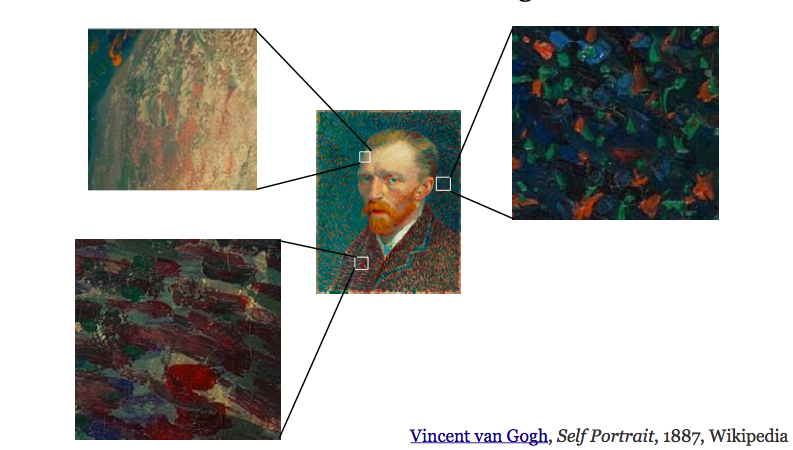
A self portrait of van Gogh’s as an example of the pointillist painting technique which relies on the principle of additive color mixing. - Mixing light “in time” with Newton’s disks, which students made for a homework assignment a few weeks ago.
Finally, we formally introduced subtractive mixing with filters and the transmittance graphs. Students then used diffraction gratings to break up the light from a tungsten lamp, observed which colors were absorbed by various filters, and sketched the transmittance graphs for those filters.
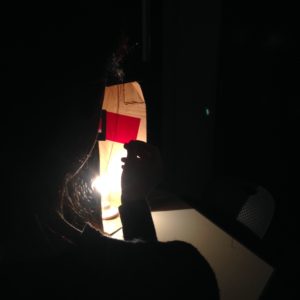
A student observing the color spectrum generated by a diffraction grating after the light has passed through a filter. Other interesting resources:
- Andrew Davidhazy, Overview of Infrared and Ultraviolet Photography, School of Photographic Arts and Sciences Rochester Institute of Technology. Accessed March 11, 2017.
- J. Kirby, K. Stonor, A. Roy, A. Burnstock, R. Grout and R. White. “Seurat’s Painting Practice: Theory, Development and Technology.” National Gallery Technical Bulletin, vol. 24, 2003.
- More pointillist painters on artsy.net
